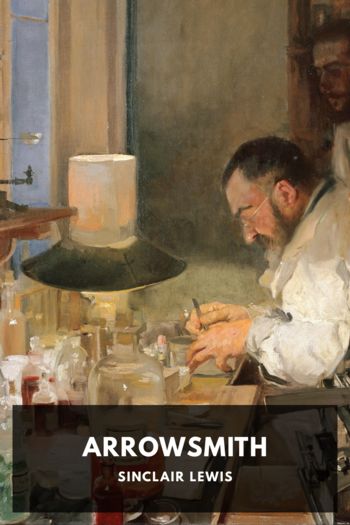Holocaust: The Nazi Persecution and Murder of the Jews, Peter Longerich [essential books to read TXT] 📗

- Author: Peter Longerich
Book online «Holocaust: The Nazi Persecution and Murder of the Jews, Peter Longerich [essential books to read TXT] 📗». Author Peter Longerich
Who are the enemies of our state? We group them together under the heading ‘reaction-
aries’. And this reaction is a tangled, many-coloured skein. We can see red flags. We can see coal-black flags. We can see flags of black, red, and gold. We can even see a few black, white, Segregation and Discrimination, 1935–7
57
and red flags. The leader of this reactionary rabble is the Jew. The Jew is the general leading the whole reactionary army. 16
At the end of July, before the anti-Jewish wave of terror and the campaigns of
violence had reached their climax, there were already attempts being made by the
NS leadership and the Reich government to stem the tide and to address the main
anti-Semitic demands of the Party activists with the help of legal measures.
It was quite evident that the wave of terror was not achieving the level of public
support that it had intended. It had not succeeded in its original aim of deploying
the ‘Jewish question’ to improve the popular mood, which was still as low as it had
been before, and was if anything getting worse during the summer. 17 In a circular to the Party of 9 August Martin Bormann (who ran the office of the Führer's
deputy, Hess) informed Party functionaries that Hitler had given the order to all
responsible Party offices to cease ‘individual operations’ against Jews. 18
The Nuremberg Laws
At the same time as the Party leadership was making efforts to stem the tide of
anti-Semitic violence, legal measures were being instituted with the aim of regu-
lating the three key elements behind the campaign of violence: ‘racial defilement’
and ‘mixed marriages’; economic discrimination; and the exclusion of Jews from
German citizenship.
Demands for penalties against ‘racial miscegenation’ were central to the
NSDAP’s racial policies. In March 1930 the NSDAP group in the Reichstag had
introduced a draft bill in this area that made provision for the death penalty in
severe cases. 19 Before 1933 the NSDAP leadership had already worked up several draft bills aimed at the ‘separation of races’. 20 In 1933, after preliminary work conducted by a group of experts selected from amongst Party functionaries and
civil servants, the Prussian Minister of Justice had proposed a draft bill, but it was
not taken up by the commission that had been set up to manage the reform of
criminal law. 21 After a law had banned ‘mixed marriages’ for soldiers and reservists in May 1935,22 and district courts had started to cover for registrars who were refusing to marry Jews and non-Jews, 23 the Reich Minister of the Interior, Wilhelm Frick, publicly announced on 25 July that a law against ‘mixed marriages’
was in preparation. On the following day he called upon registrars to postpone
issuing notices of marriage between Aryans and Jews until further notice, since
formal legal regulation of this matter was to follow shortly. 24 The Ministry of Justice had already developed a draft law to combat ‘marriages detrimental to the
German people’, which was intended to prevent marriages with both ‘members of
alien races’ and ‘people with hereditary illnesses’. 25 At the Gau Party rally in Essen on 4 August, Frick announced the legal settlement of the ‘Jewish question’; at the
58
Racial Persecution, 1933–1939
same event Goebbels had already made an unambiguous demand for an end to
marriages between Jews and non-Jews. 26 On 20 August Franz Gürtner, the Minister for Justice, also declared that legal measures would shortly be put in
place. 27 What was originally planned was to declare a ban on ‘mixed marriages’
together with a ban on marriages considered undesirable for eugenic reasons in a
law against ‘marriages detrimental to the German people’. After the Blood Pro-
tection Law (Blutschutzgesetz) was passed in September the second issue was left
to the Marital Health Law (Ehegesundheitsgesetz) in October. 28
The second major legal anti-Semitic assault demanded by the National Social-
ists with increasing vigour in the spring and summer of 1935 was the deprivation of
citizenship. This was one of the NSDAP’s most long-standing demands and had
been included in their Party programme of 1920.29 Following an initiative from the Reich Ministry of the Interior work had begun on a Reich Citizenship Law as early
as July 1933, and it was intended to demote ‘non-Aryans’ to the level of second-
class citizens. Preliminary activities were suspended in September 1933, evidently
in response to international criticism of these plans. 30
However, from early 1935 onwards demands from within the Reich Ministry of
the Interior were being voiced publicly with increasing urgency. On 26 April Frick
announced the new version of the Citizenship Law. 31 The Immigration Law passed in May 1935 had already created room for refusing citizenship to Jews and others
who were unwelcome for reasons of race by removing existing immigration rights
and transferring responsibilities for decisions to the state authorities.
Under pressure from the continuing boycotts, the third of the National Social-
ists’ key anti-Semitic demands—the judicial restriction of the economic activities
of the Jewish minority—took a particular turn in summer 1935.
The way in which the organized street violence was instrumentalized is made
clear in a situation report by the section of the SD, the Party intelligence service,
responsible for Jewish affairs in August 1935. 32 ‘It will not be possible to tackle the Jewish problem thoroughly as long as there are no unambiguous laws in place. This
is the situation which gives rise to the individual operations that have so often been
condemned. . . . In order to put a stop in future to these acts of terror, which are
committed by National Socialists out of inner conviction, or to be able to identify
when operations are undertaken by groups hostile to us, it is desirable, as soon as
possible: (1) that a unified policy is developed for all the ministries handling the
Jewish question, and (2) that effective laws are passed that will demonstrate to the
people that the Jewish question is being dealt with from the top.’
In a speech delivered in Königsberg on 18 August the Reich Minister for
Economic Affairs, Schacht, protested against further ‘individual operations’. 33
What is more, the speech contained remarkably forthright criticisms of the
methods by which Jews were excluded from the economic life of the country. It
was, however, in no sense opposed to economic discrimination against





Comments (0)